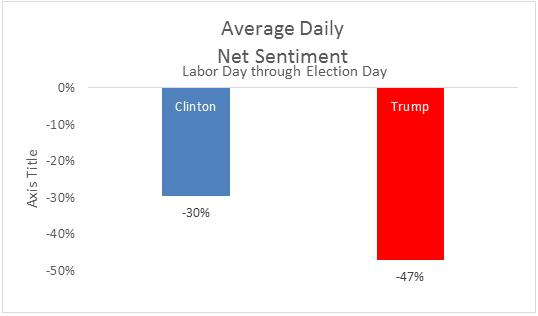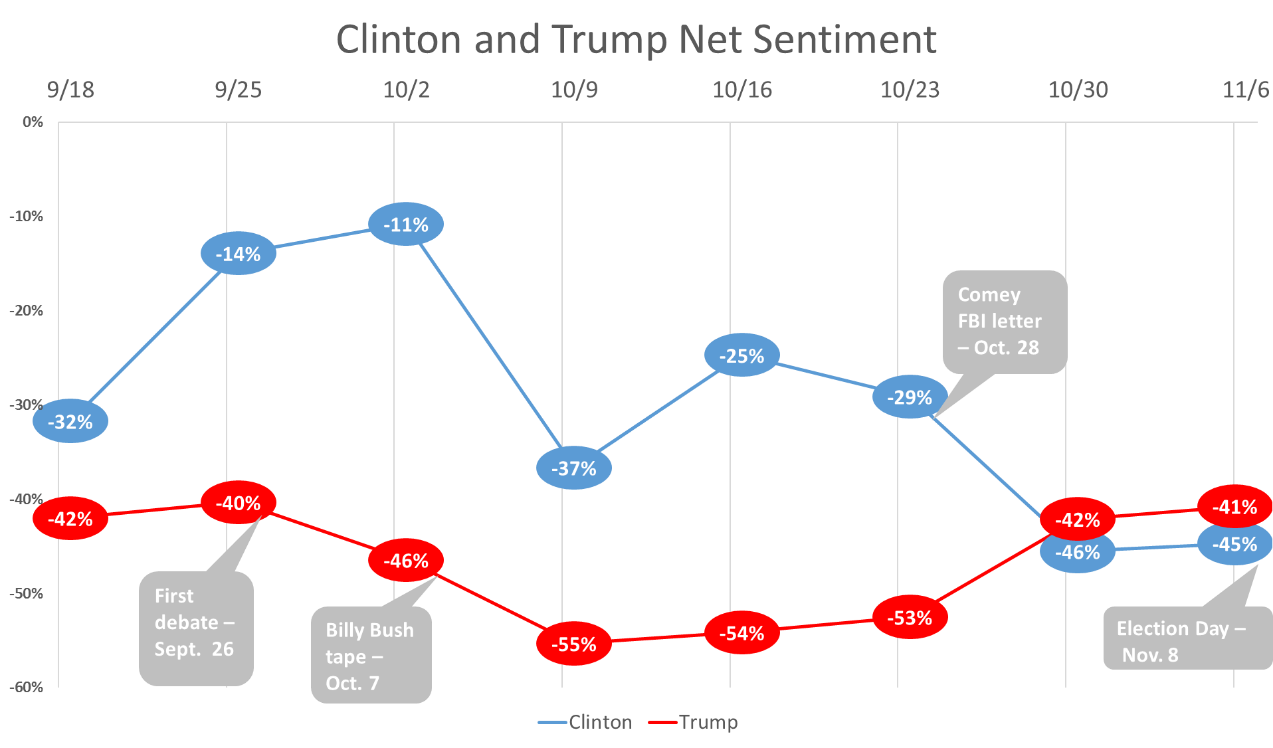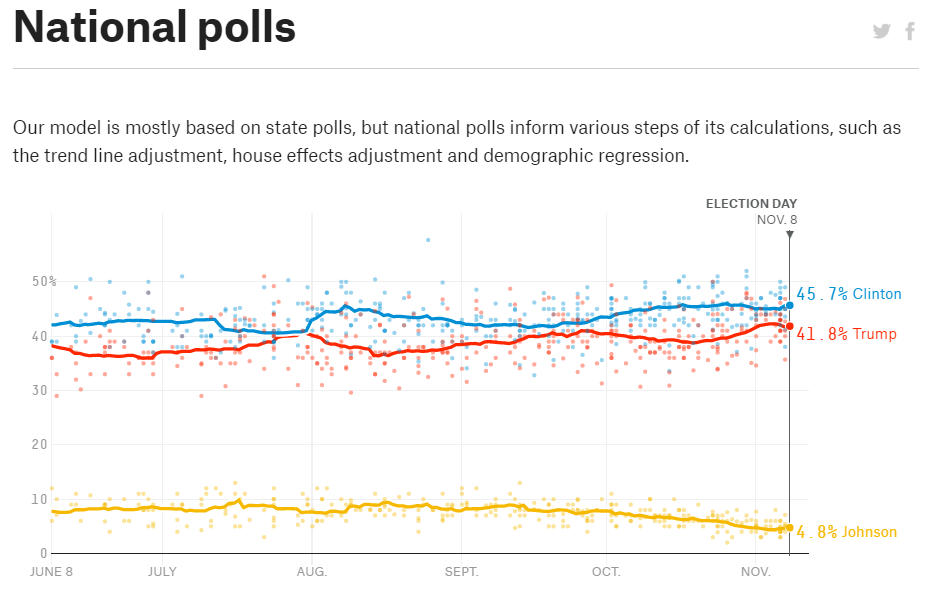Articles that end with confident assertions such as, “And that’s why Donald Trump is president,” are inherently suspect. A presidential campaign is a complex chain of events in which an almost infinite number of factors could have influenced public opinion by an amount greater than or equal to the margin of victory.
Consider this analogy. On the last play of the game, a football team is trailing by one point. Their kicker misses a relatively easy field goal from the opponent’s 25 yard line. Most spectators are likely to conclude that the missed field goal was the cause of their loss. However, if we were to watch a replay of the game, we might find dozens of offensive and defensive mistakes that, had they turned out differently, would have changed the outcome of the game. Picking any one of them as “the cause” of the loss is essentially arbitrary. It was the kicker’s bad luck to have failed on the very last play. Since it is readily available in everyone’s memory, people see it as the cause of his team’s defeat.
This is the first reason you should disregard the data I’m about to present and be skeptical of the claims that have been made for them.
An organization called Engagement Labs does market research in which they attempt—for a price—to measure consumer attitudes toward brand name products. They do this by asking an online sample of consumers to report whether they have had any positive or negative conversations about the product. The difference between the percentages of positive and negative conversations is their measure of consumer “sentiment” toward the product.
Every four years, out of curiosity, this organization asks their respondents to report positive and negative conversations about the two major party presidential candidates. Not surprisingly, Americans had negative attitudes toward both candidates. Averaged over the duration of the campaign (Labor Day to Election Day), attitudes toward Trump (-47%) were more negative than attitudes toward Clinton (-30%).

However, between the surveys conducted on October 23 and October 30, there was an abrupt change in their respondents’ conversations. October 28 was the day that FBI Director James Comey sent a letter to Congress stating that he was reopening his investigation of Hillary Clinton’s emails. Here are the data.

Two days after Comey’s letter, attitudes toward Clinton dropped by 17% and attitudes toward Trump increased by 11%—a 28% shift, sufficient to put Trump ahead. Trump maintained that slight edge on November 6, two days before the election.
This is an astonishing change in attitudes. Such a large shift is almost never reported in pre-election surveys. Here’s the average of pre-election polls conducted by traditional methods.

Why didn’t other pre-election surveys report this abrupt shift in attitudes following Comey’s letter? Brad Fay, Chief Commercial Officer of Engagement Labs, maintains that their measure of political sentiment is a more sensitive predictor of election outcomes than the typical survey question which asks respondents for whom they intend to vote. He gives four reasons.
- Behavior predicts behavior better than attitudes do. The behavior being predicted in this case includes the decision of whether to vote or stay home as well as for whom to vote.
- The invisible offline conversation matters.
- Conversations amplify the impact of the media.
- Humans are a herding species. This is Fay’s way of saying that people conform to the expressed attitudes of other people.
As a social psychologist, I accept Fay’s first argument. Attitudes don’t always predict behavior very well. However, past behavior is a relatively good predictor of future behavior. In this case, the behavior of stating your opinions to friends can encourage you to behave in a way that is consistent with those opinions. Fay’s last three reasons are semi-redundant. They are different ways of saying that our behavior is influenced by the attitudes of our peers.
However, there is a second reason you should be skeptical of the information in this post. I’ve searched the Engagement Labs website in vain for basic information about how their surveys were conducted—their sample size, their method of ensuring the representativeness of their sample, the wording of their questions, etc. All I can find is jibberish such as “(t)he data are fed into our TotalSocial platform, where it is scored and combined with social media data to capture the TotalSocial momentum for leading brands.” They probably regard this information as a trade secret. But until such information is provided, I’ll have to claim that this is an intriguing finding of uncertain validity.
You may also be interested in reading: